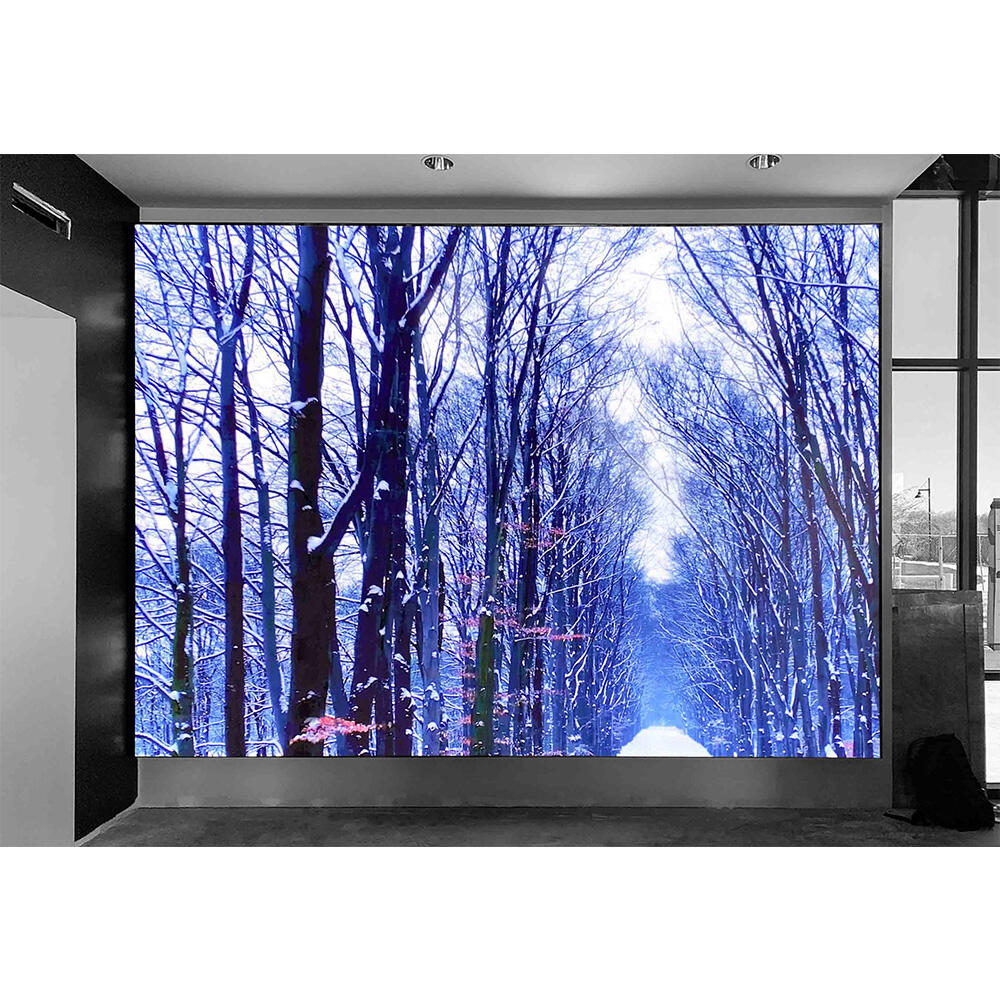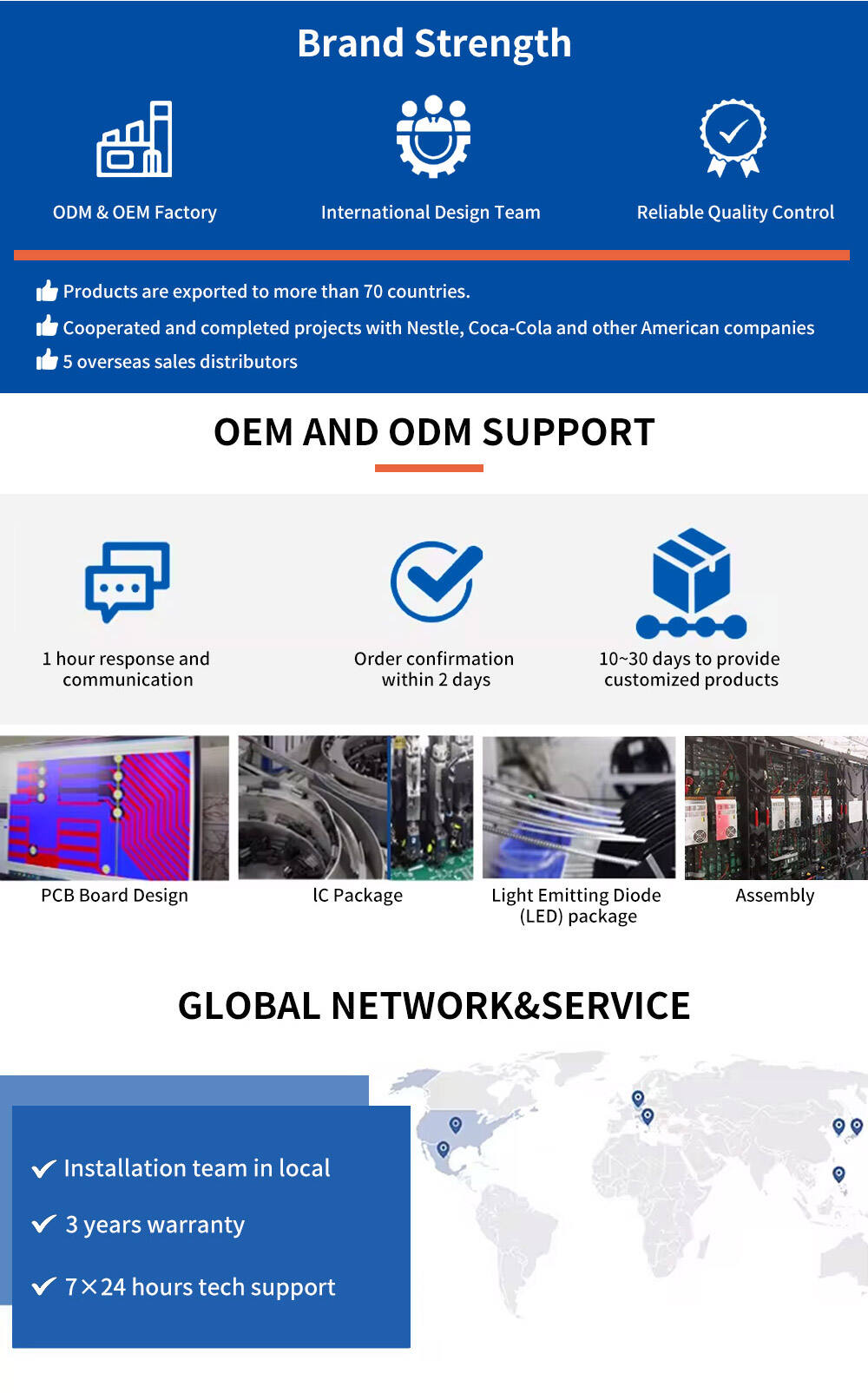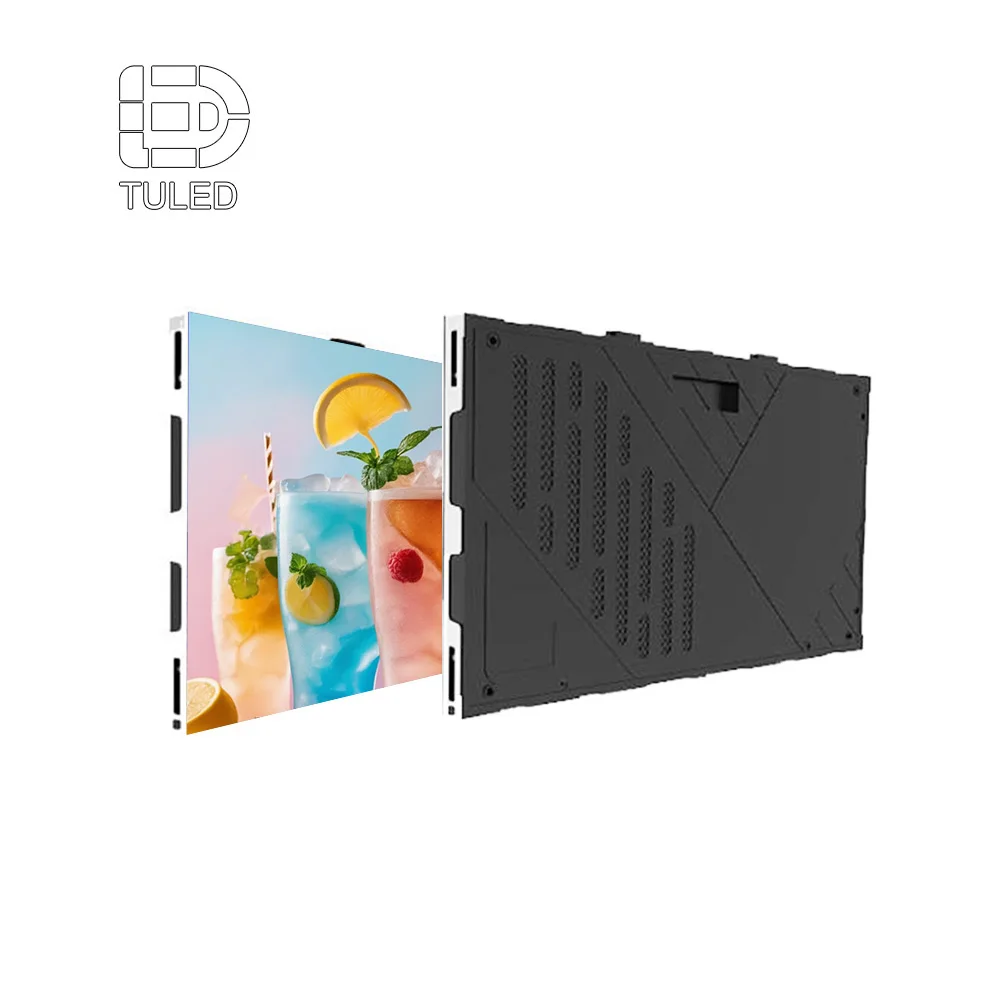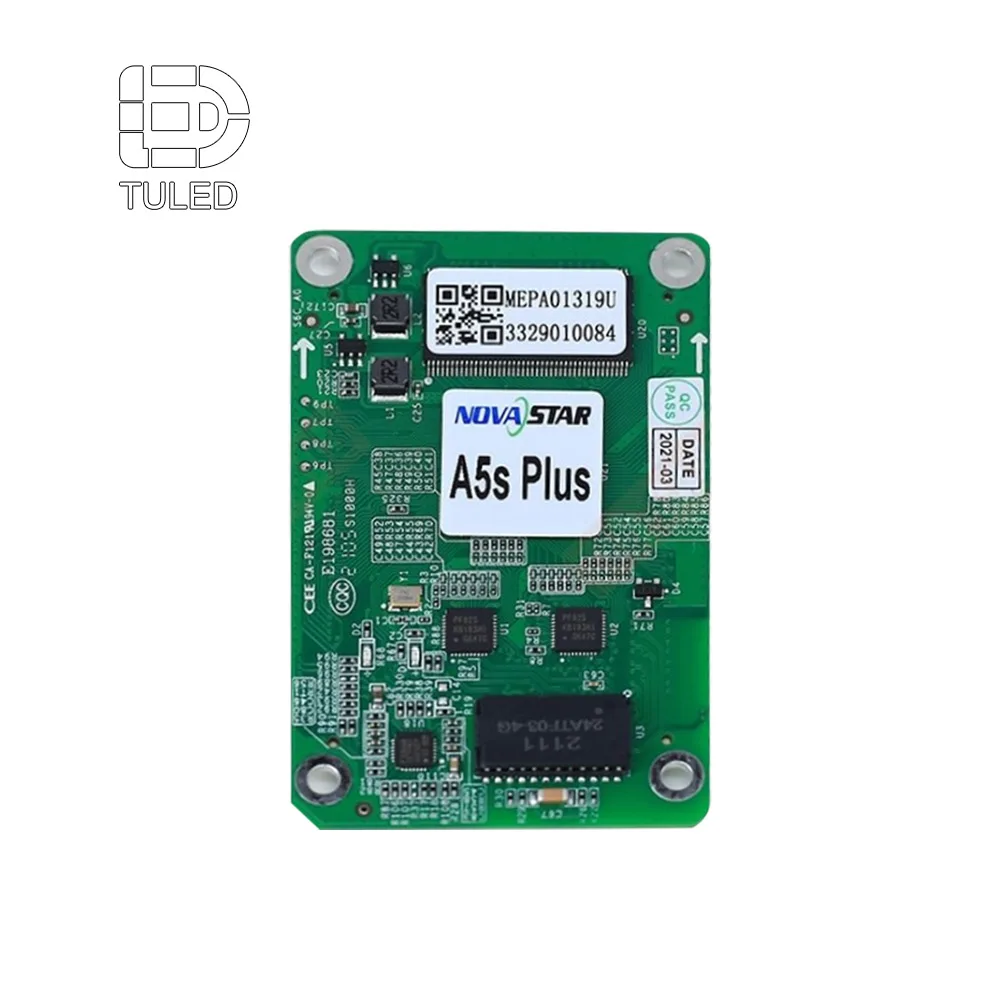The Science Behind LED Display Operation
The Fundamental Principle of Light Emission in LED Displays
LED displays work using something called electroluminescence. Basically, this means that when electricity flows through special semiconductor materials inside the display, they actually produce light themselves. The big difference from LCD screens is that LCDs need a separate backlight source, whereas every single LED in these displays creates its own light. That's why some high end models can reach brightness levels around 10,000 nits, making them super visible even under direct sunlight according to DisplayMate research from last year. Another advantage comes from this self lighting approach too. Tests show that LED displays typically consume about 40 percent less power than regular LCD technology. Plus they handle colors much better, covering nearly all of what's known as the DCI-P3 color space, which makes images look more vibrant and lifelike across different devices and environments.
How Pixels and Sub-Pixels Create Visible Images
Modern LED screens create images through tiny groups of RGB (Red, Green, Blue) sub-pixels that form each pixel we see. When manufacturers tweak how bright each sub-pixel is individually using something called pulse width modulation, they manage to get around 16.7 million different colors on screen. The really top notch displays go even further with micro LED technology where the spacing between pixels drops below 1mm. These advanced panels deliver 4K resolution but pack in almost three times as many pixels per area compared to regular OLED screens according to data presented at the SID conference back in 2023.
Role of Semiconductor Materials in LED Display Functionality
Gallium nitride (GaN) and indium gallium nitride (InGaN) are the primary semiconductor compounds used in LED construction. These materials enable:
- Wavelength precision: ±2nm tolerance for consistent color output
- Thermal stability: Reliable operation up to 125°C
- Longevity: Up to 100,000 hours of operational life due to reduced electron leakage (Compound Semiconductor Week 2024)
Their quantum well structures directly convert electrical energy into light, achieving 85% higher luminous efficiency than phosphor-based solutions.
Comparison of LED Display Technology with LCD and OLED
| Feature | LED Display | LCD | OLED |
|---|---|---|---|
| Contrast Ratio | 1,000,000:1 | 1,500:1 | 1,000,000:1 |
| Peak Brightness | 10,000 nits | 1,000 nits | 800 nits |
| Response Time | 0.01ms | 4ms | 0.1ms |
| Lifespan | 100k hours | 60k hours | 30k hours |
Data Source: Display Technology Benchmark 2023
LED technology surpasses LCDs in brightness, contrast, and energy efficiency, while avoiding OLED’s susceptibility to burn-in. Its modular design supports seamless scalability—from wearable devices to stadium-sized video walls—with latency maintained below 2ms across all configurations (SMPTE 2024 Broadcast Standards).
Key Materials and Components in LED Display Systems
Core Semiconductor Materials: Gallium Nitride and Indium Gallium Nitride
Gallium nitride, or GaN for short, is basically what makes blue LEDs possible. When mixed with indium to create InGaN alloys, manufacturers can adjust how much light gets emitted at different wavelengths, which means we get those nice green and cyan colors too. What's really impressive about these semiconductor materials is their ability to turn electrical current directly into light particles inside those tiny quantum wells. Looking at recent numbers from the industry, GaN based LEDs are now showing defect rates under 100 per square centimeter. That low defect count explains why big LED displays look so consistent in color all across their surfaces.
Printed Circuit Boards and Thermal Management in LED Display Design
The multi layer printed circuit boards used in LED displays play a really important role in keeping everything electrically connected while managing all that heat buildup. These PCBs typically feature high frequency FR4 substrate material along with copper layers that weigh around 2 ounces each. This combination helps maintain the signal integrity needed for those rich 16 bit color depths we see on modern screens. For thermal management, manufacturers often incorporate aluminum cores that can handle heat dissipation at rates approaching 15 watts per square centimeter. When paired with active cooling solutions rather than just relying on passive methods, operating temperatures drop by roughly 40%, which means these displays tend to last well over 70 thousand hours before needing replacement. And there's even fail safe circuitry built in to keep things running smoothly, ensuring that pixel failures stay incredibly rare at less than one out of every ten thousand pixels in real world applications.
Step-by-Step LED Display Manufacturing Process
Wafer Fabrication: The Foundation of LED Chip Production
The manufacturing process starts off using either semiconductor grade sapphire or silicon wafers that are generally around 4 to 8 inches across. These wafers need to be super smooth, almost atomically flat after polishing. Next comes photolithography work combined with some chemical etching techniques which create those tiny pixel structures on the surface. This step basically lays down what will become the basis for both optical properties and electrical behavior later on. Research from a recent 2023 materials science paper found something interesting too - when wafer surfaces deviate less than 5 nanometers, they actually produce about 18 percent better light output efficiency compared to rougher surfaces.
Epitaxial Growth and Doping Techniques for LED Efficiency
The process of growing crystalline layers through metal organic chemical vapor deposition (MOCVD) typically happens at very high temperatures ranging from about 1,000 degrees Celsius up to around 1,200 degrees. These conditions create the necessary p-n junctions that make electroluminescence possible. When it comes to controlling the exact color output, manufacturers carefully introduce specific elements during production. Magnesium is commonly used when they want blue light emission, while beryllium works better for those ultraviolet versions. This careful addition helps keep the wavelength accuracy pretty tight, usually within plus or minus 2 nanometers. Recent improvements in what's called multi quantum well structures have pushed things even further forward. Some laboratory models now achieve an impressive 220 lumens per watt efficiency according to last year's Semiconductor Manufacturing Report.
Chip Dicing, Testing, and Binning for Consistent Performance
After epitaxial growth, wafers are sliced into individual LED chips (0.1–2.0 mm²) using diamond-tipped blades. Each chip undergoes automated testing for:
- Luminance uniformity (±5% tolerance)
- Forward voltage (2.8V–3.4V range)
- Chromaticity coordinates (ΔE < 0.005 for premium bins)
Machine vision-guided binning achieves 98.7% yield rates, ensuring consistency across production batches (2023 industry benchmarks).
Surface-Mount Technology (SMT) in LED Display Assembly
Robotic pick-and-place systems mount LED chips onto PCBs at speeds exceeding 30,000 components per hour. Reflow soldering creates joints with sub-10 μm alignment precision, while 3D SPI (solder paste inspection) detects defects down to 15 μm resolution. SMT automation reduces assembly costs by 40% compared to manual wire bonding methods (2024 manufacturing analysis).
Assembly of Modular LED Display Panels for Commercial Use
Modular construction and pixel pitch considerations in LED display layout
Most commercial LED screens are built using modular panels, usually around 500 by 500 millimeters up to 1000 by 1000 millimeters in size, which fit together without gaps. The term pixel pitch refers to how far apart the individual LEDs sit from each other, typically ranging from about 1.5 millimeters all the way to 10 millimeters. This measurement basically tells us two things: how sharp the image looks and how far away someone needs to be to see it clearly. Displays with very small pixel pitches, anything under 2.5 mm, work best when viewers are right next to them, such as in control centers or broadcast studios. On the flip side, bigger pixel pitches offer a better mix of price and effectiveness for places where people watch from afar, like sports arenas or concert venues.
Cabinet integration and power distribution in large-scale LED systems
Modern aluminum alloy cabinets contain all the essential components including modular panels, power supplies, processing units, and cooling mechanisms. Most cabinets sized at around 960 by 960 millimeters can accommodate between eight to twelve panels while keeping operational noise below the 65 decibel threshold. One smart feature worth noting is the parallel power circuit design that lets technicians perform maintenance tasks on parts of the system without needing to shut everything down completely, which obviously makes these systems much more reliable in practice. When it comes to managing heat, newer models incorporate advanced thermal solutions that boost heat dispersion rates by approximately 15 to 25 percent according to recent research from 2024. This improvement translates into longer lasting components with some reports suggesting component life spans could extend by as much as thirty percent.
Balancing fine-pitch LEDs with cost efficiency in real-world applications
The 0.9mm pitch modules provide stunning 4K clarity when viewed from about 3 meters away, but let's face it, at $1,200 per square meter, most businesses just can't afford them outright. That's why according to the latest Display Economics Report from 2024, around 78% of companies are going for hybrid setups instead. What they do is mix those high resolution P2.5 to P3 modules where people actually look directly at displays, while using cheaper P4 to P6 panels for the corners and sides. This approach cuts costs by roughly 40% without anyone noticing any difference in picture quality. And interestingly enough, this cost cutting trick has become pretty standard now, showing up in about two thirds of all digital signage installations we see in stores and transit hubs these days.
Driving Electronics and Control Systems in Modern LED Displays
How Driver ICs Regulate Brightness and Color Accuracy in LED Pixels
The driver ICs in modern displays send steady current to every sub-pixel, which helps counteract problems from voltage changes and temperature swings that might mess with colors. These chips work pretty fast too, handling signals at around 25 MHz while supporting 16 bits of grayscale. That means they can produce something like 281 trillion different color mixes, giving screens their rich visual quality. Most importantly, built-in auto-calibration keeps colors looking right even after years of use. Industry standards measure this as Delta E below 3, basically meaning no one will notice any drift in color accuracy for the entire life of the display, often lasting well beyond 50,000 operating hours.
Signal Processing and Refresh Rates in High-Performance LED Displays
Top-tier LED displays process 12G-SDI signals at refresh rates above 3840Hz, eliminating motion blur in fast-moving content. Temporal dithering enhances perceived bit depth without increasing bandwidth demands. Distributed processing architectures synchronize over 2,000 modules with less than 0.01° clock skew, ensuring flawless alignment in expansive video walls.
Managing the Trade-Off Between Resolution Demands and Power Consumption
Supporting 33 million individually controlled LEDs in a 4K display presents significant power challenges. Engineers address this through three key strategies:
- Dynamic voltage scaling that reduces power in inactive screen regions
- Sub-pixel rendering techniques that preserve perceived sharpness with 25% fewer physical LEDs
- Hybrid power topologies combining centralized and distributed regulation
These innovations allow 2.5mm pitch displays to operate at 800 nits while consuming less than 450W/m²—a 40% improvement over earlier designs (2023 display engineering benchmarks).
FAQ
What is electroluminescence in LED technology?
Electroluminescence is the principle where semiconductor materials emit light as electricity passes through them, allowing each LED in a display to produce its own light without a separate backlight.
How do RGB sub-pixels work in LED displays?
RGB sub-pixels in LED displays combine red, green, and blue lights at various intensities to create a broad spectrum of colors, enabling 16.7 million color variations.
Why are GaN and InGaN important in LED displays?
GaN and InGaN are critical semiconductor materials that provide precise wavelength control, excellent thermal stability, and long operational lifespans in LED displays.
What are the benefits of LED displays over LCD and OLED?
LED displays offer superior brightness, contrast, energy efficiency, and longer lifespans compared to LCD and OLED displays, without the risk of burn-in associated with OLEDs.
How does pixel pitch affect LED display quality?
Pixel pitch determines the sharpness of the image and the optimal viewing distance, with smaller pitches suitable for close viewing and larger pitches for distant viewing.
What role do driver ICs play in LED displays?
Driver ICs regulate the current to each sub-pixel, ensuring consistent color accuracy and brightness despite voltage fluctuations and temperature changes.












